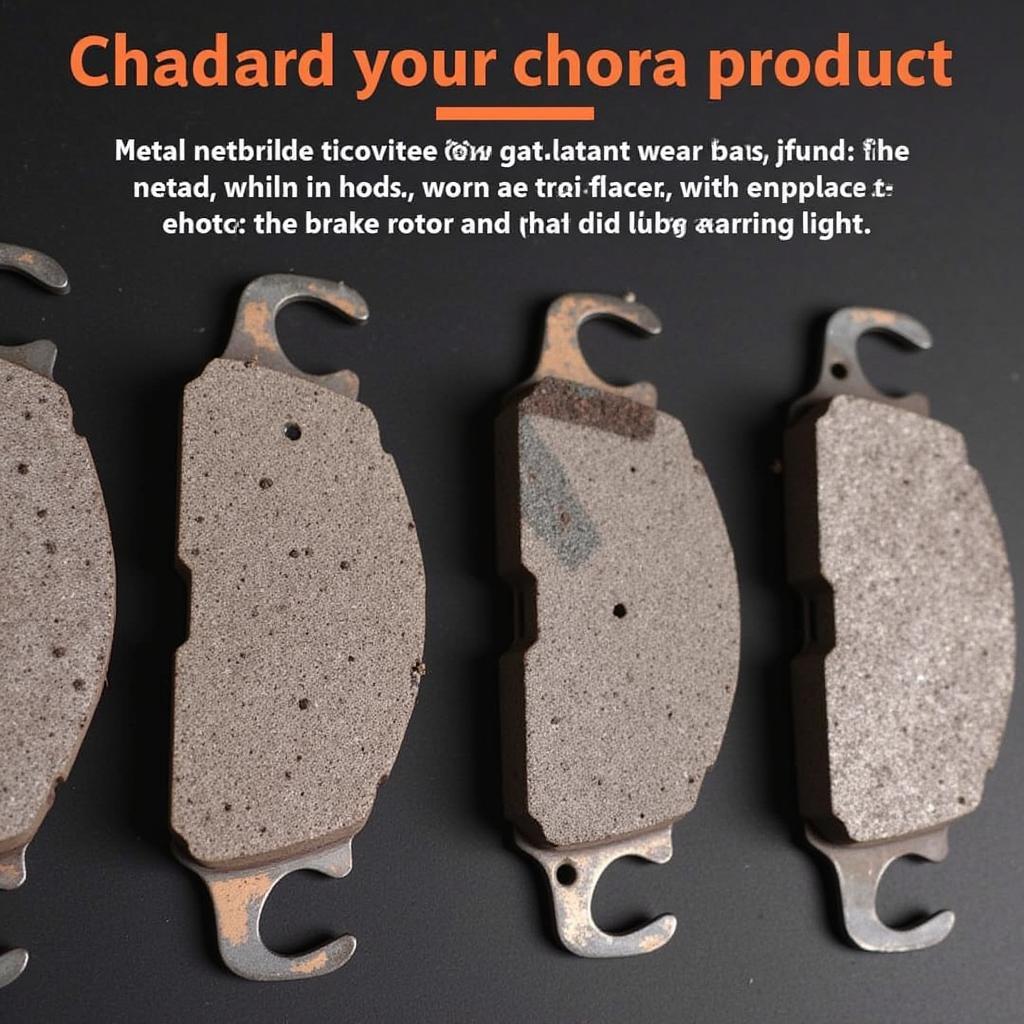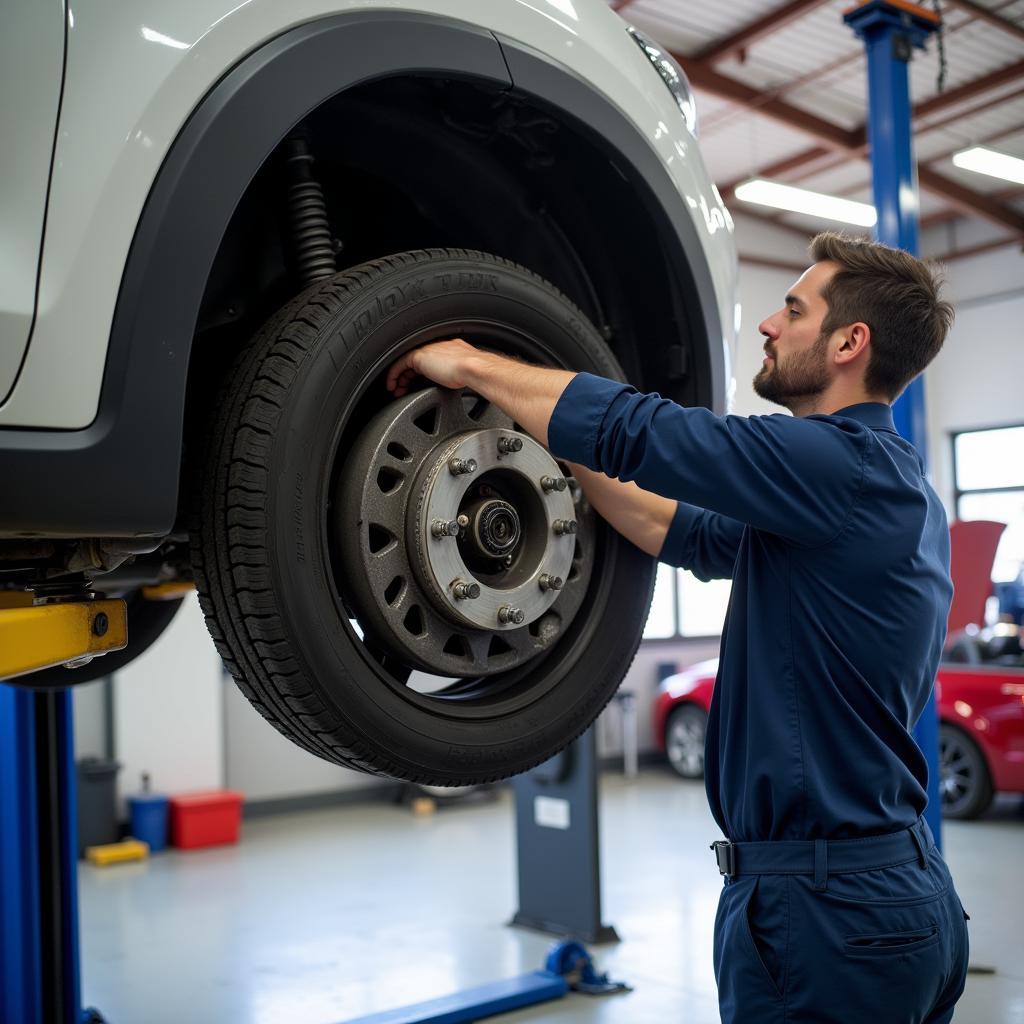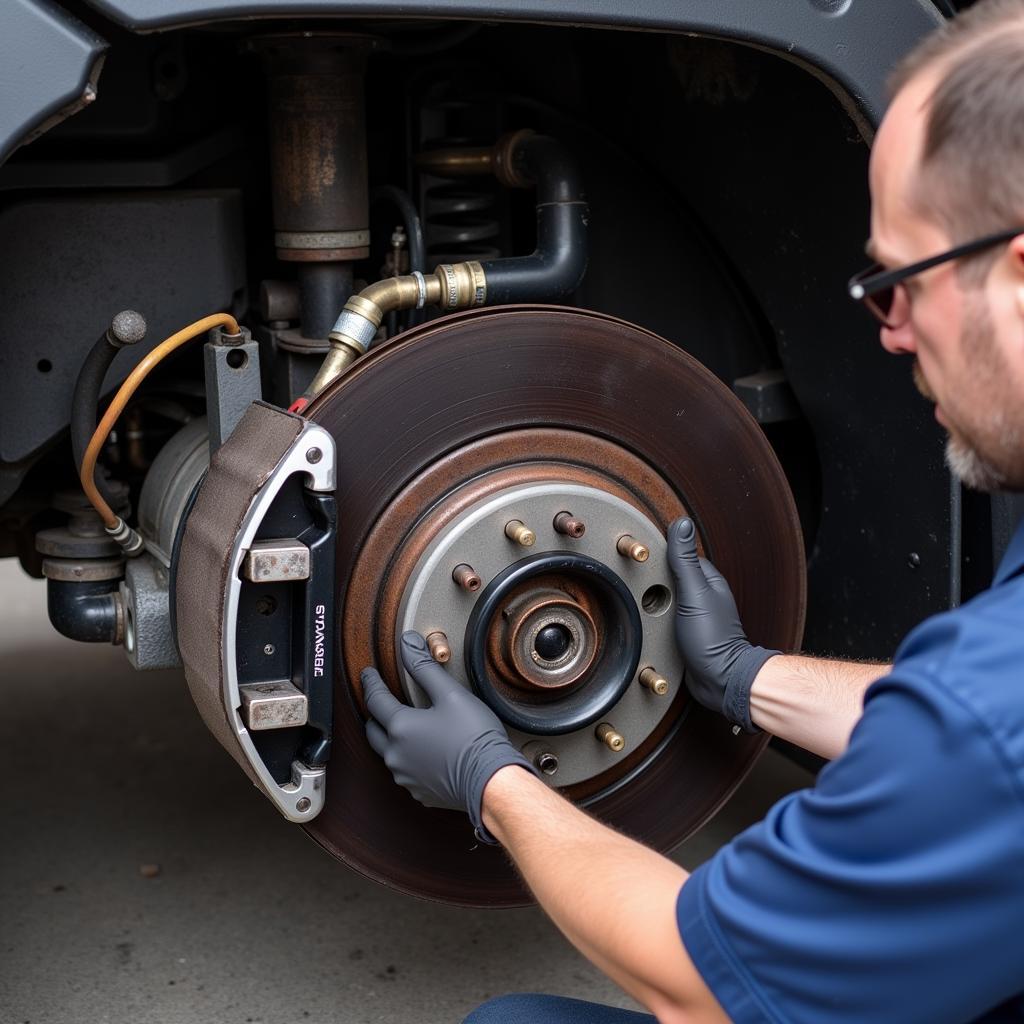If your 2007 Dodge Nitro brake warning light has illuminated on your dashboard, it’s crucial to address the issue promptly. This warning light often signals a problem with your braking system, which could jeopardize your safety and that of your passengers. This comprehensive guide will explore the common causes behind a 2007 Dodge Nitro brake warning light and provide practical solutions to help you diagnose and potentially fix the problem.
Understanding Your Dodge Nitro’s Brake System
Before delving into the causes, it’s helpful to understand the basics of your Nitro’s braking system. Your vehicle utilizes a four-wheel hydraulic brake system, meaning brake fluid pressure is applied to all four wheels when you press the brake pedal. Several components work together to ensure effective braking, including:
- Brake Pedal: This is where you apply pressure with your foot to initiate braking.
- Brake Booster: This component amplifies the force you apply to the brake pedal, making braking easier.
- Master Cylinder: This cylinder converts pedal pressure into hydraulic pressure that travels through the brake lines.
- Brake Lines: These metal tubes carry brake fluid from the master cylinder to the wheels.
- Brake Calipers: These components house the brake pads and pistons that clamp the pads against the rotors.
- Brake Rotors: These metal discs rotate with the wheels, and the friction from the brake pads slows them down.
- Brake Fluid: This specialized fluid transmits hydraulic pressure throughout the system.
- Parking Brake: This mechanical brake system operates independently of the hydraulic brakes and is used to keep the vehicle stationary when parked.
Common Causes of a 2007 Dodge Nitro Brake Warning Light
A lit brake warning light can stem from various issues, ranging from minor to severe. Here are some of the most common culprits:
Low Brake Fluid
The most frequent cause is low brake fluid, often due to worn brake pads or a leak in the system. As brake pads wear down, the brake calipers need more fluid to maintain the same pressure. A leak anywhere in the system can also lead to a drop in brake fluid level, triggering the warning light.
Solution:
- Check your brake fluid level. Locate the brake fluid reservoir under the hood, typically a translucent container with a “Minimum” and “Maximum” marking.
- If the fluid level is below the “Minimum” line, add the appropriate DOT 3 brake fluid (check your owner’s manual).
- If you need to add brake fluid frequently, it’s crucial to have your brake system inspected by a qualified mechanic to identify and repair any leaks.
Worn Brake Pads
Brake pads are designed to wear down over time. When they become too thin, a sensor in the brake pad will make contact with the rotor, triggering the brake warning light.
Solution:
Worn brake pads require immediate attention. Driving with severely worn pads can damage the rotors and significantly reduce braking efficiency, making it unsafe to drive. Have your brake pads inspected and replaced by a professional mechanic if necessary.
 Worn Brake Pads
Worn Brake Pads
Faulty Brake Light Switch
The brake light switch, located on the brake pedal arm, signals the brake lights to activate when you press the pedal. A malfunctioning switch can disrupt the signal, illuminating the brake warning light.
Solution:
Diagnosing a faulty brake light switch often involves testing its electrical continuity with a multimeter. This task is best left to a qualified mechanic who can accurately test and replace the switch if necessary.
ABS Issues
Your 2007 Dodge Nitro is equipped with an Anti-lock Braking System (ABS). The ABS warning light will usually illuminate alongside the brake warning light if a problem arises within the ABS system. This could point to a faulty ABS module, wheel speed sensor, or wiring issue.
Solution:
Diagnosing ABS problems typically requires specialized diagnostic equipment. It’s recommended to consult a qualified mechanic to scan the ABS system for trouble codes and perform the necessary repairs.
Other Potential Causes
While less common, other issues can also trigger a brake warning light in your Nitro, such as:
- Faulty Parking Brake Switch: A stuck or malfunctioning parking brake switch can send a false signal to the dashboard.
- Electrical Problems: Wiring issues, blown fuses, or a faulty instrument cluster can disrupt the warning light system.
- Master Cylinder Failure: A failing master cylinder might not generate adequate hydraulic pressure, leading to reduced braking performance and illuminating the warning light.
Troubleshooting Your Brake Warning Light: A Step-by-Step Guide
- Safety First: If your brake warning light comes on while driving, pull over to a safe location as soon as possible.
- Check Brake Fluid: As mentioned earlier, low brake fluid is the most common culprit. Carefully inspect the brake fluid level in the reservoir and add the appropriate DOT 3 brake fluid if needed.
- Inspect Brake Pads: If you suspect worn brake pads, schedule an inspection with a mechanic. Avoid driving the vehicle if you hear grinding or squealing sounds while braking, as this often indicates severely worn pads.
- Test Brake Lights: Have a friend or family member observe the brake lights while you press the pedal. If the lights don’t illuminate, the brake light switch might be faulty.
- Consult a Mechanic: If the issue persists or you suspect a more complex problem, it’s best to seek professional help. A qualified mechanic can diagnose the issue using specialized tools and perform the necessary repairs.
When to Seek Professional Help
While some brake warning light causes can be addressed with basic troubleshooting, it’s crucial to remember that your braking system is critical to your safety. If you’re unsure about any aspect of the diagnosis or repair, it’s always best to consult a qualified mechanic. Delaying professional assistance could worsen the problem, lead to costly repairs, and compromise your safety on the road.
 Car on Lift in Shop
Car on Lift in Shop
Conclusion
A 2007 Dodge Nitro brake warning light should never be ignored. Understanding the common causes and following the troubleshooting steps outlined in this guide can help you address the issue promptly and ensure your safety on the road. Remember, if you encounter any doubts or suspect a more complex problem, it’s always best to consult a qualified mechanic for expert diagnosis and repair. Your safety and that of your passengers should always be your top priority.

